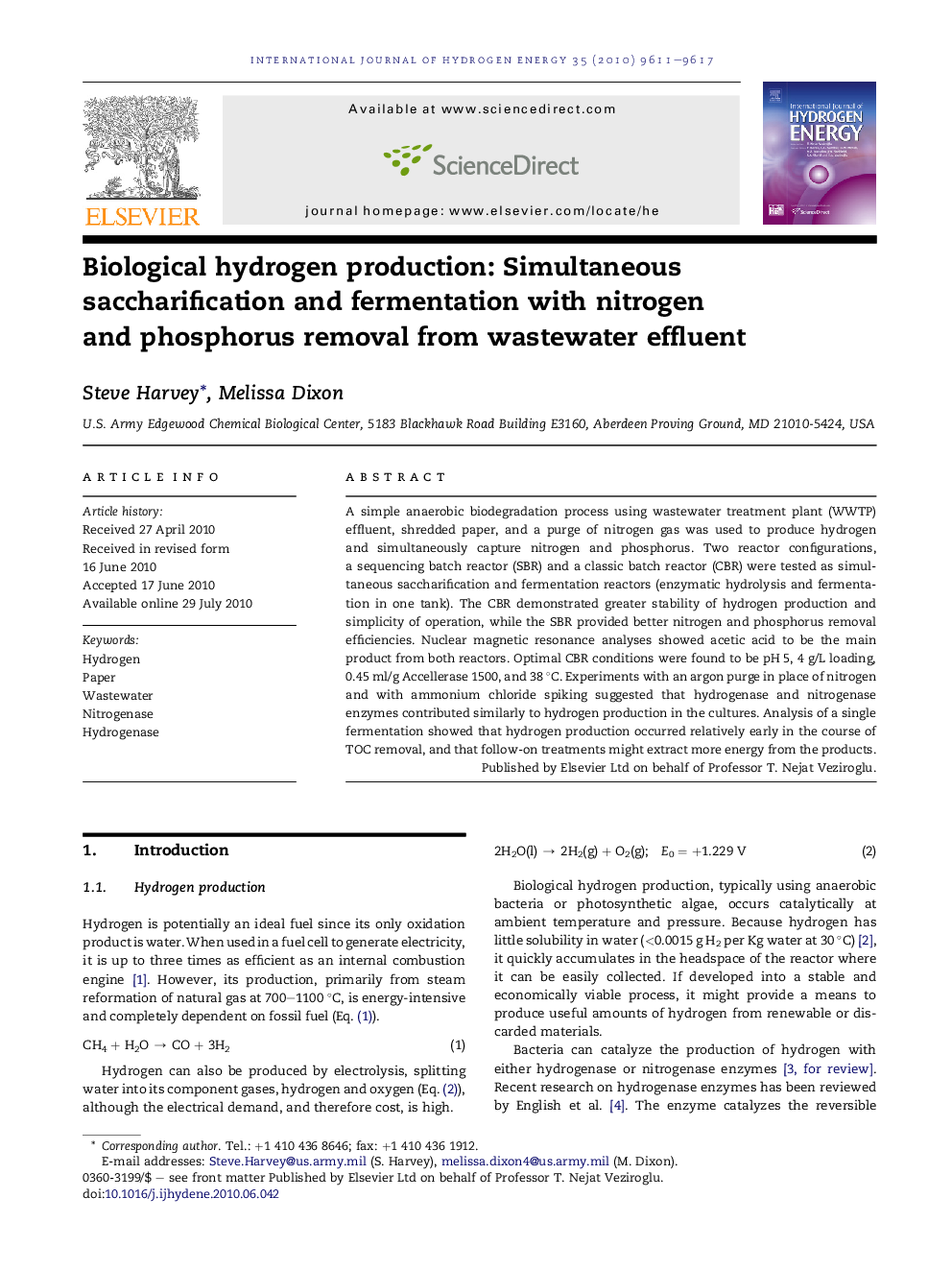| Article ID | Journal | Published Year | Pages | File Type |
|---|---|---|---|---|
| 1280251 | International Journal of Hydrogen Energy | 2010 | 7 Pages |
A simple anaerobic biodegradation process using wastewater treatment plant (WWTP) effluent, shredded paper, and a purge of nitrogen gas was used to produce hydrogen and simultaneously capture nitrogen and phosphorus. Two reactor configurations, a sequencing batch reactor (SBR) and a classic batch reactor (CBR) were tested as simultaneous saccharification and fermentation reactors (enzymatic hydrolysis and fermentation in one tank). The CBR demonstrated greater stability of hydrogen production and simplicity of operation, while the SBR provided better nitrogen and phosphorus removal efficiencies. Nuclear magnetic resonance analyses showed acetic acid to be the main product from both reactors. Optimal CBR conditions were found to be pH 5, 4 g/L loading, 0.45 ml/g Accellerase 1500, and 38 °C. Experiments with an argon purge in place of nitrogen and with ammonium chloride spiking suggested that hydrogenase and nitrogenase enzymes contributed similarly to hydrogen production in the cultures. Analysis of a single fermentation showed that hydrogen production occurred relatively early in the course of TOC removal, and that follow-on treatments might extract more energy from the products.
